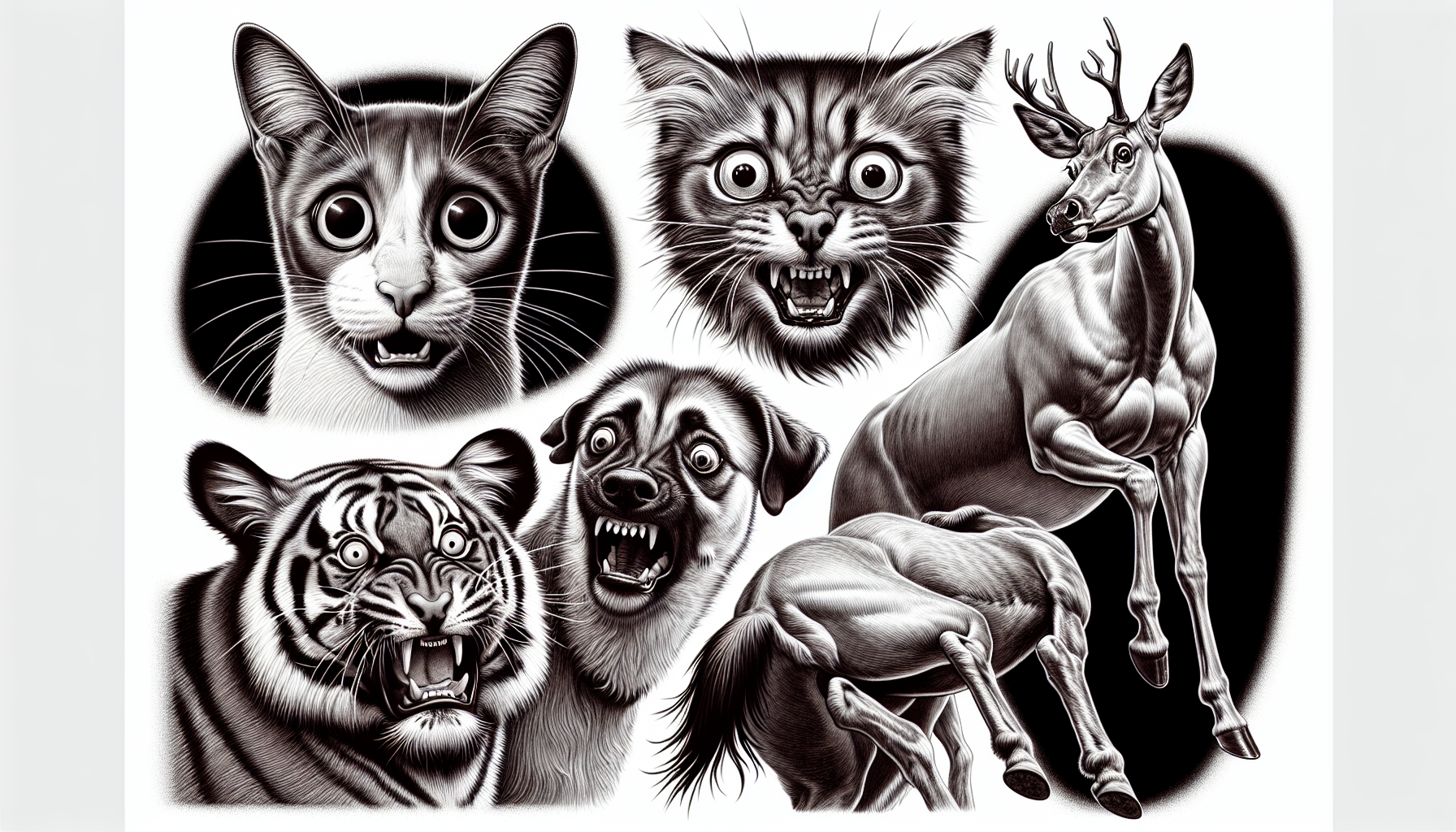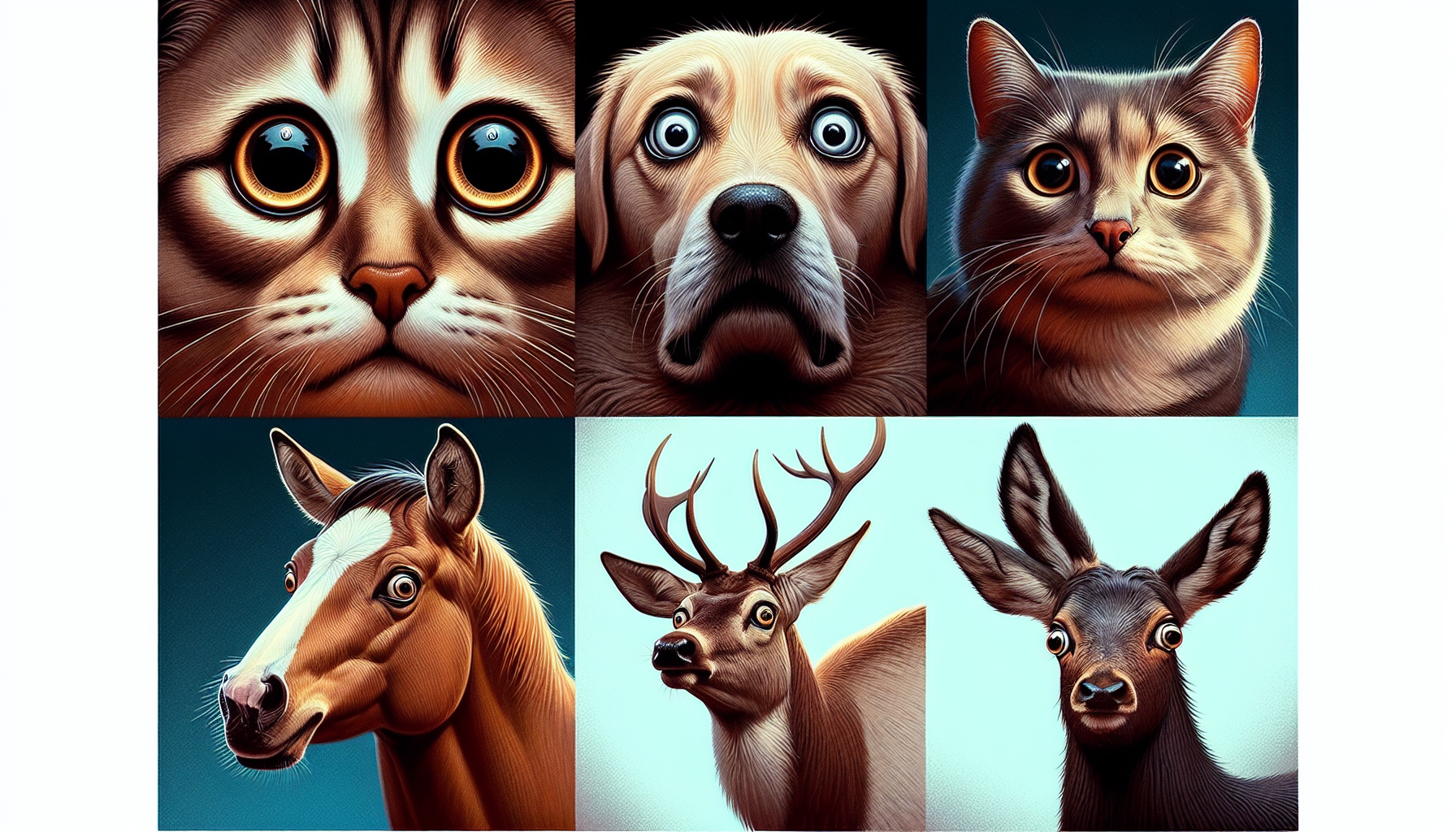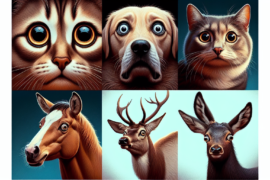In this article, you will discover valuable insights on how to identify fearful behaviors displayed by animals. Understanding the signs of fear in animals is crucial for creating a safe and comfortable environment for them. By recognizing these behaviors, you can effectively respond and provide the necessary support, ensuring the well-being and happiness of our furry friends. With these insights, you will be better equipped to recognize and address fear in animals, fostering a stronger bond and promoting their overall health and happiness.

Introduction
If you are an animal lover, it’s important to understand and recognize fearful behaviors in animals. By being able to identify when an animal is experiencing fear, you can help provide them with the support and care they need. Fear can manifest in various ways, both physically and behaviorally, depending on the species. In this article, we will explore the definition of fear, the importance of recognizing fear in animals, and the common signs of fear across different species.
Understanding Fearful Behaviors
Definition of Fear
Fear can be defined as an emotional response to a perceived threat or danger. It is a natural instinct that animals have developed as a means of self-preservation. When an animal feels afraid, their body undergoes physiological changes that prepare them to either fight the threat or flee from it. These changes can include increased heart rate, heightened senses, and the release of stress hormones.
Importance of Recognizing Fear in Animals
Recognizing fearful behaviors in animals is crucial for their overall well-being. When animals feel afraid, they may be unable to relax or engage in normal behaviors. This can lead to increased stress and anxiety, which can have negative effects on their physical and mental health. By identifying fear in animals, we can provide them with a sense of security, create a safe environment, and help them overcome their fears.
Common Signs of Fear in Animals
Animals display various signs of fear, both physically and behaviorally. Some common signs of fear in animals include trembling or shaking, panting or heavy breathing, piloerection (hair standing on end), cowering or hiding, and pacing or restlessness. Vocalization and vocal signs, such as whimpering or whining, growling or snarling, hissing or screeching, and barking or howling, can also indicate fear. Additionally, certain body language and facial expressions, like wide eyes or dilated pupils, ears back or flattened, tucked tail or wagging tail, raised hackles or ruffled fur, lip licking or yawning, and raised paw or paw lifting, may suggest fear. Finally, animals may exhibit aggression and defensive behaviors, such as biting or nipping, scratching or clawing, snapping or lunging, and defensive posture or aggressive stance, when they feel afraid.
Physical Signs of Fear
Trembling or Shaking
One of the most noticeable physical signs of fear in animals is trembling or shaking. When an animal is afraid, their muscles may contract due to heightened stress or anxiety, leading to involuntary shaking. This trembling can be observed in various parts of the body, such as the legs, tail, or even the entire body.
Panting or Heavy Breathing
Another physical sign of fear is panting or heavy breathing. Just like humans, animals may experience increased respiration when they are afraid. Panting or heavy breathing helps animals take in more oxygen and regulate their body temperature in stressful situations.
Piloerection (Hair Standing on End)
When an animal feels fear, their hair or fur may stand on end, a phenomenon known as piloerection. This erect hair is a result of the animal’s fight-or-flight response, which causes tiny muscles attached to the hair follicles to contract. Piloerection serves to make the animal appear larger and more intimidating to potential threats.
Cowering or Hiding
Cowering or hiding is a behavioral and physical sign that indicates fear in animals. Fearful animals may crouch down, lower their body posture, or seek places to conceal themselves. This behavior is an attempt to escape from the source of fear or to make themselves less visible to perceived threats.
Pacing or Restlessness
When animals are afraid, they may exhibit pacing or restlessness. They may repeatedly move back and forth in a confined area, showing signs of agitation and anxiety. This behavior is a result of the animal’s inability to relax and their heightened alertness to potential dangers.
Vocalization and Vocal Signs
Whimpering or Whining
Whimpering or whining is a vocal sign commonly associated with fear in animals. This high-pitched sound is often accompanied by other fear-related behaviors, such as trembling or cowering. Whimpering or whining serves as a way for the animal to communicate their distress and seek comfort or reassurance.
Growling or Snarling
Growling or snarling is another vocal sign that can indicate fear in certain species, especially dogs. When animals feel threatened or afraid, they may growl or snarl as a warning to potential aggressors. This vocalization is a way for the animal to defend themselves and establish boundaries.
Hissing or Screeching
Hissing or screeching is commonly observed in cats when they are fearful. This vocal sign is often accompanied by defensive body postures, such as arched backs and raised fur. Hissing or screeching serves as a warning to potential threats and a means for cats to communicate their fear and discomfort.
Barking or Howling
Barking or howling can also be indicative of fear in animals, particularly in dogs. When dogs feel afraid, they may bark or howl as a means of alerting others to the perceived threat or attracting attention to their distress. The tone and intensity of the bark or howl can vary depending on the level of fear the animal is experiencing.

Body Language and Facial Expressions
Wide Eyes or Dilated Pupils
Wide eyes or dilated pupils are common physical signs of fear in animals. When animals are afraid, their eyes may appear larger than usual, and the pupils may dilate. This dilation allows more light to enter the eyes, enhancing the animal’s visual perception and making them more alert to potential dangers.
Ears Back or Flattened
Fearful animals may have their ears back or flattened against their heads. This is a defensive body language that signals their discomfort or fear. By flattening their ears, animals try to make themselves appear smaller and less threatening to potential aggressors.
Tucked Tail or Wagging Tail
The positioning of a dog’s tail can provide valuable insights into their emotional state. When a dog is afraid, they may tuck their tail between their hind legs, signaling fear or submission. Conversely, a wagging tail can also indicate fear, especially if the wag is low, slow, or accompanied by other signs of anxiety.
Raised Hackles or Ruffled Fur
Raised hackles or ruffled fur is a physical sign typically associated with fear or aggression in animals. When animals feel afraid, their fur may stand up along the back and neck, creating a raised ridge or ruffled appearance. This reaction is a result of the animal’s fight-or-flight response, preparing them for potential confrontation.
Lip Licking or Yawning
Lip licking or yawning can be observed in animals when they are feeling fearful. These behaviors serve as self-calming mechanisms and can signify anxiety or stress. By engaging in lip licking or yawning, animals may be attempting to diffuse their own fear or communicate their discomfort to others.
Raised Paw or Paw Lifting
A raised paw or paw lifting is a subtle yet significant sign of fear in animals. Dogs, for example, may lift a paw slightly off the ground when they are feeling anxious or unsure. This behavior can be accompanied by other fear-related signs, such as trembling or avoidance.
Aggression and Defensive Behaviors
Biting or Nipping
One of the more extreme behaviors associated with fear is biting or nipping. When animals feel threatened or cornered, they may resort to aggression as a means of protecting themselves. Biting or nipping serves as a warning to potential threats, signaling the animal’s readiness to defend itself.
Scratching or Clawing
Fearful animals may engage in scratching or clawing behavior, especially if they feel trapped or cornered. This behavior is often seen in cats, who may scratch at surfaces or individuals to establish boundaries or create an escape route. Scratching or clawing can be a defensive response to fear.
Snapping or Lunging
Snapping or lunging is a defensive behavior often observed in dogs when they feel fearful or threatened. This aggressive response serves as a warning to potential aggressors, indicating the dog’s readiness to defend itself. Snapping or lunging can be accompanied by other fear-related signs, such as growling or raised hackles.
Defensive Posture or Aggressive Stance
Animals may assume defensive postures or aggressive stances when they feel afraid. This can include arching their backs, raising their tails, and appearing taller or larger in size. These postures are an attempt to intimidate potential threats and communicate the animal’s willingness to protect itself.
Unusual Behaviors
Excessive Vocalization
Excessive vocalization is a behavior commonly associated with fear in animals. When animals feel overwhelmed or threatened, they may start vocalizing more than usual. This can manifest as constant barking, purring, or chirping, indicating the animal’s distress and heightened anxiety.
Excessive Shedding
Animals may experience excessive shedding when they are under stress or afraid. This excessive shedding is a result of the animal’s fight-or-flight response, which leads to increased shedding of fur or feathers. If you notice a sudden increase in shedding, it may be a sign of underlying fear or anxiety in your pet.
Destructive Behavior
Destructive behavior, such as chewing on furniture, scratching walls, or digging holes, can be indicative of fear in animals. When animals feel afraid or anxious, they may engage in these behaviors as a means of relieving stress or redirecting their fear. Destructive behavior can also be a cry for attention or an attempt to escape from a perceived threat.
Self-Harm or Self-Mutilation
In extreme cases, animals may resort to self-harm or self-mutilation due to fear or anxiety. This behavior can include excessive grooming, scratching to the point of injury, or even causing harm to themselves through repetitive biting or licking. Self-harm or self-mutilation requires immediate attention and intervention from a veterinarian or animal behaviorist.
Recognizing Fear by Species
Recognizing Fearful Behaviors in Dogs
Dogs display a wide range of fearful behaviors, including trembling, cowering, barking, and submissive postures. They may also exhibit signs of aggression, such as growling or snapping, as a defensive response to fear. Additionally, dogs may display excessive shedding, destructive behavior, or self-harm when they are under extreme stress or anxiety.
Recognizing Fearful Behaviors in Cats
Cats exhibit both physical and behavioral signs of fear, such as dilated pupils, flattened ears, hissing, and arched backs. They may also engage in defensive behaviors, such as scratching or biting, when they feel threatened. Excessive vocalization, destructive behavior, and self-harm can also be observed in fearful cats.
Recognizing Fearful Behaviors in Horses
Horses communicate fear through a range of behaviors, including wide eyes, raised tail, snorting, and pawing the ground. They may also exhibit flight responses, such as bolting or bucking, when faced with fear-inducing stimuli. Horses may also display aggression or defensive behaviors, such as biting or kicking, as a means of protecting themselves.
Recognizing Fearful Behaviors in Birds
Birds often exhibit physical signs of fear, such as fluffed feathers, widened eyes, and rapid breathing. Behavioral signs can include cowering, hiding, or trying to escape from perceived threats. Birds may vocalize excessively, feather pluck, or engage in self-mutilation when they are feeling fearful or stressed.
Recognizing Fearful Behaviors in Reptiles
Reptiles can display subtle signs of fear, such as flattened bodies or hissing. They may also exhibit defensive behaviors, like biting or tail rattling, when they feel threatened. Additionally, reptiles may refuse to eat or become more aggressive if they are experiencing fear or stress.
Recognizing Fearful Behaviors in Small Mammals
Small mammals, such as rabbits or rodents, may exhibit fear through behaviors like freezing, hiding, or attempting to escape. They may also vocalize in distress or display physical signs of fear, such as trembling or decreased activity. Small mammals can become more aggressive or engage in self-mutilation when they feel threatened or afraid.
Causes of Fearful Behaviors
Past Trauma or Abuse
Animals that have experienced past trauma or abuse are more likely to display fearful behaviors. Previous negative experiences can leave a lasting impact on an animal, causing them to become fearful or anxious in similar situations. It’s important to provide these animals with patience, understanding, and a safe environment to help them overcome their fears.
Lack of Socialization
Animals that have not been properly socialized during critical periods of their development may exhibit fearful behaviors. Socialization helps animals learn to navigate and interact with the world around them, reducing their likelihood of feeling fear or anxiety in new or unfamiliar situations. Lack of socialization can contribute to fear-based responses in animals.
Medical Conditions
Certain medical conditions can cause or contribute to fearful behaviors in animals. Pain, discomfort, or underlying health issues can make animals more prone to experiencing fear or anxiety. It’s essential to consult with a veterinarian to rule out any medical causes for fearful behaviors and to address any underlying health concerns.
Environmental Factors
The environment in which an animal lives can greatly impact their level of fear and anxiety. Loud noises, unfamiliar surroundings, or changes in routine can trigger fear-based responses in animals. Creating a calm and structured environment, along with positive reinforcement training, can help animals feel more secure and less fearful.
Breed Disposition
Some animal breeds may have a predisposition to experiencing fear or anxiety. Certain breeds may be more prone to fearful behaviors due to their genetics or breeding history. It’s important to be aware of breed-specific tendencies and provide additional support and training to help these animals cope with their fears.
Genetic Predisposition
Genetics can also play a role in an animal’s tendency to experience fear or anxiety. Some animals may have a genetic predisposition to being more fearful or anxious in certain situations. Understanding an animal’s genetic background can help provide insight into their behavior and tailor interventions to their specific needs.
Conclusion
Recognizing fearful behaviors in animals is crucial for their well-being and the overall bond between humans and animals. By understanding the signs of fear across different species, we can provide appropriate support and care to help animals feel safe and secure. Whether it’s trembling in dogs, hissing in cats, or fluffed feathers in birds, being able to identify these fear-related behaviors allows us to intervene, create a positive environment, and help animals overcome their fears. By fostering a sense of security, understanding, and compassion, we can build stronger relationships with our animal companions and ensure their emotional and physical well-being.
